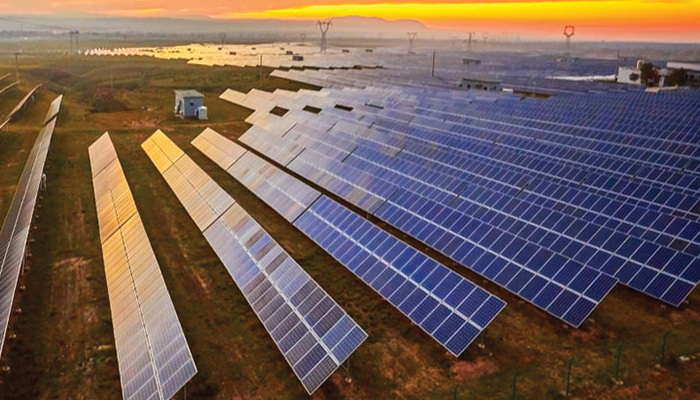Solar Panel Glass Production Process
Materials
Tempered Glass: Most solar panels use tempered glass because of its strength and durability. Tempering involves heating the glass to high temperatures and then rapidly cooling it, making it four to five times stronger than standard glass.
Low-Iron Glass: This type of glass is often used for solar panels because it has high light transmission, allowing more sunlight to reach the PV cells. Low-iron glass minimizes the amount of iron oxide, which reduces the greenish tint typically found in standard glass, enhancing clarity and efficiency.
Anti-Reflective Coatings: Solar panel glass is often treated with anti-reflective coatings to maximize light absorption and reduce the amount of sunlight that reflects off the surface.
Manufacturing Steps
Cutting and Shaping: The raw glass is cut into specific sizes and shapes based on the dimensions of the solar panel.
Tempering: The glass is heated and cooled to enhance its strength and durability.
Coating: Anti-reflective coatings or other treatments are applied to optimize light transmission and protect the glass from environmental damage.
Lamination: The glass is then laminated with EVA (ethylene-vinyl acetate) or another protective material to encapsulate the PV cells and ensure long-lasting protection against moisture and other external factors.
Architectural Uses of Solar Panel Glass
The integration of solar panel glass into architecture allows buildings to generate renewable energy while maintaining modern and aesthetic designs. This approach is known as Building-Integrated Photovoltaics (BIPV), where solar panels are incorporated into the building's design rather than being added later. Solar panel glass can be used in various architectural elements such as facades, roofs, skylights, and windows.
Solar Facades
BIPV Facades integrate solar panels into the building's exterior walls, providing a sleek, modern appearance while generating electricity. These facades can be made of transparent or semi-transparent glass, allowing for daylighting while capturing solar energy.
Solar Roofs
Solar glass roofs replace traditional roofing materials with glass panels that house PV cells. They serve the dual purpose of protecting the building from weather elements while generating electricity. Solar shingles are a type of small solar panel that resembles traditional roofing tiles, making them ideal for residential buildings.
Solar Skylights
Solar glass skylights allow natural light to enter buildings while also generating power. These are typically semi-transparent or fully transparent solar panels that can be installed in large, open areas such as malls, atriums, or office buildings to enhance lighting while utilizing sunlight for energy production.
Solar Windows
Photovoltaic glass windows incorporate thin, transparent solar cells within the glass. These windows can generate electricity without obstructing the view or natural light. This type of solar glass is ideal for high-rise buildings with large glass surfaces.
Example: The SwissTech Convention Center in Switzerland has installed solar windows that both generate power and provide a modern aesthetic.
Benefits of Solar Panel Glass in Architecture
Energy Efficiency
Solar panel glass helps reduce the building’s energy consumption by generating electricity on-site, reducing reliance on the grid. This is especially important for meeting sustainability certifications like LEED and BREEAM.
Aesthetic Flexibility
Solar glass can be integrated seamlessly into architectural designs. Options like semi-transparent or colored PV glass enable architects to create visually appealing designs without compromising the building's energy performance.
Durability and Protection
The tempered solar panel glass is highly durable, offering protection from harsh weather conditions such as hail, storms, and high winds. This makes it suitable for both urban environments and regions with extreme weather.
Natural Light and Views
Transparent and semi-transparent solar glass allows for daylighting and outdoor views while producing electricity. This is especially useful in office buildings and commercial spaces where natural light enhances comfort and productivity.
Environmental Impact
Using solar glass in architecture contributes to sustainability by utilizing renewable energy sources and reducing the building's carbon footprint. It also promotes eco-friendly urban development and helps cities meet climate goals.

